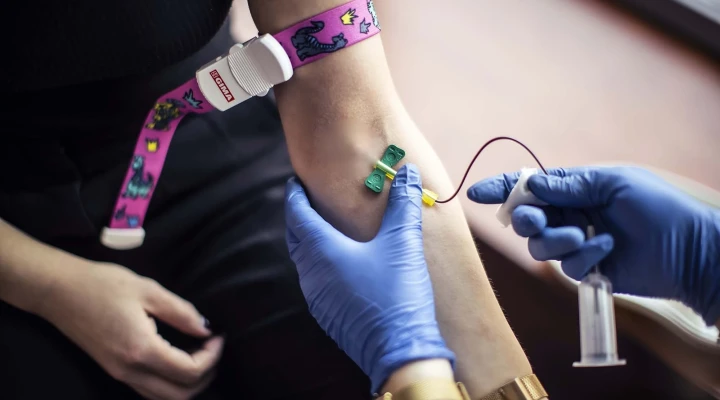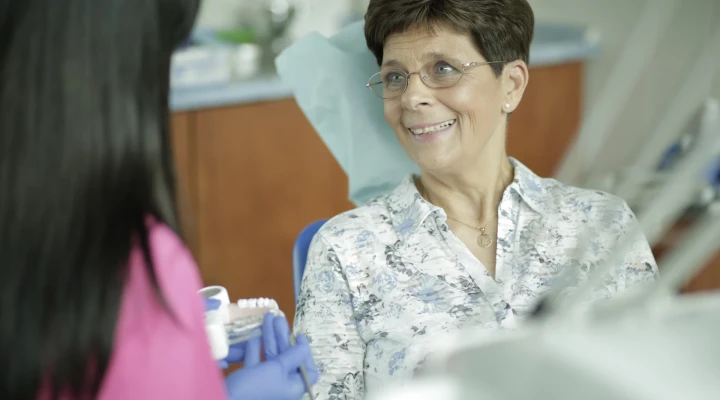We speak to orthodontist Dr Márta Csermely and speech therapist, swallowing therapist and myofunctional trainer Dr Gabriella Hevesi about a complex approach to the entire temporomandibular joint.
Why is it so important to apply speech therapy to support our dental health?
Dr Márta Csermely, orthodontist: Orthodontics alone does not always bring lasting results: having a balanced temporomandibular joint requires teamwork. The position of the tongue – whether it is higher or lower in the mouth – not only affects the position of the teeth, it also affects your posture. You can see that changing your posture also changes the position of you tongue.
GH: While Doctor Csermely is concerned with bones, I focus on the muscles. The orthodontist and the speech therapist work in harmony, much like the position of the tongue, the posture and the bones all influence each other. They all work together like the gears of a machine. Let's look at specific examples: when in therapy, if I see something in the muscles that is affecting the bones, for instance, or we have just removed the load from the bone, I consult frequently with Doctor Csermely. I also make sure I communicate with the patient as well, treating them as a partner.
Bad habits that sabotage the harmony of our bodies
Spending too long with your phone or tabletcan create a so-called 'text neck' posture. This results in a slipped lower jawbone, something that is critical to jaw growth in childhood for jaw growth, and in adulthood because the jaw joint can become overloaded, which can lead to temporomandibular joint (TMJ) disorders.
The position of the skull affects the general posture: if your posture is straight, the head will be in a different position, as though it is bent, as the head will slide forward and the lower jaw will slide backwards like a seesaw. This affects the posture of the tongue, as the muscles of the tongue originate from the lower jaw, so if it moves backwards, the tongue also has less space, and the lower jaw assumes an asymmetrical position.
For children, sucking their thumb for too long (after the age of 1.5) can also be a bad habit that can upset the functional balance of the articulatory muscles. As a result, the muscles needed for correct swallowing and proper tooth and jaw development will not be able to develop properly. The functional balance of the muscles of the tongue is upset. This means that the growth of the bone structure – the bones of the face and jaw – will not develop and function properly either. When the tongue rests on the palate, a large, wide upper arch develops and pulls the lower jaw forward and upward. When the tongue is down, the jaw slides backwards. The tongue provides an impulse that affects the growth and position of the jawbones.
Is there an upper age limit for orthodontics? Can problems only be corrected in childhood or can adults go for it too?
MC: Treatment with Invisalign invisible orthodontic aligners is not painful and your teeth will feel less sensitive than with other orthodontic treatments. It's easy to learn and get used to using, inserting and removing the aligners. You can achieve visible results and noticeable changes without experiencing any significant discomfort. The treatment is appropriate for anyone aged six and above.
HG: While there is no upper age limit for swallowing therapy, there is a lower age limit: since daily practice is required, it is important for the child to be of a responsible age. The best age to start is from eight to ten years old. In terms of prevention, it is also worth preparing younger age groups, too. There are playful language and lip exercises that will help maintain their enthusiasm. I also have older patients who come to me for therapy before and after having implants fitted, for example. Here too, the goal is to shape the tongue muscle so that the tongue does not move the implant in the wrong direction. The treatment is the same, only the issue is different.
Can you give some inspiring examples of how it is never too late to start balancing the jaw joint?
MS: Often, several members of the same family benefit from the treatment. Not so long ago, we had a young girl and her mom start treatment at the same time. First the little girl arrived with a 'reverse swallow', or tongue thrust, then the mom turned out to have a clicking jaw, migraine headaches and back pain. With both the complex therapy aimed at balancing the jaw joint, we achieved impressive results for both patients.
GH: Once, Doctor Csermely started orthodontic treatment for an older girl due to a dental occlusion. For this kind of issue, myofunctional training is an important additional treatment option. Meanwhile, the mother also applied for therapy and orthodontic treatment, as she also had an issue with tongue swallowing. It was the perfect combination of adult awareness and a child’s ability to learn. The mother was both a very good support partner and an example to follow for her children. In these cases, because they practiced the tasks together on a daily basis, the motivation and momentum in their children has also increased.




